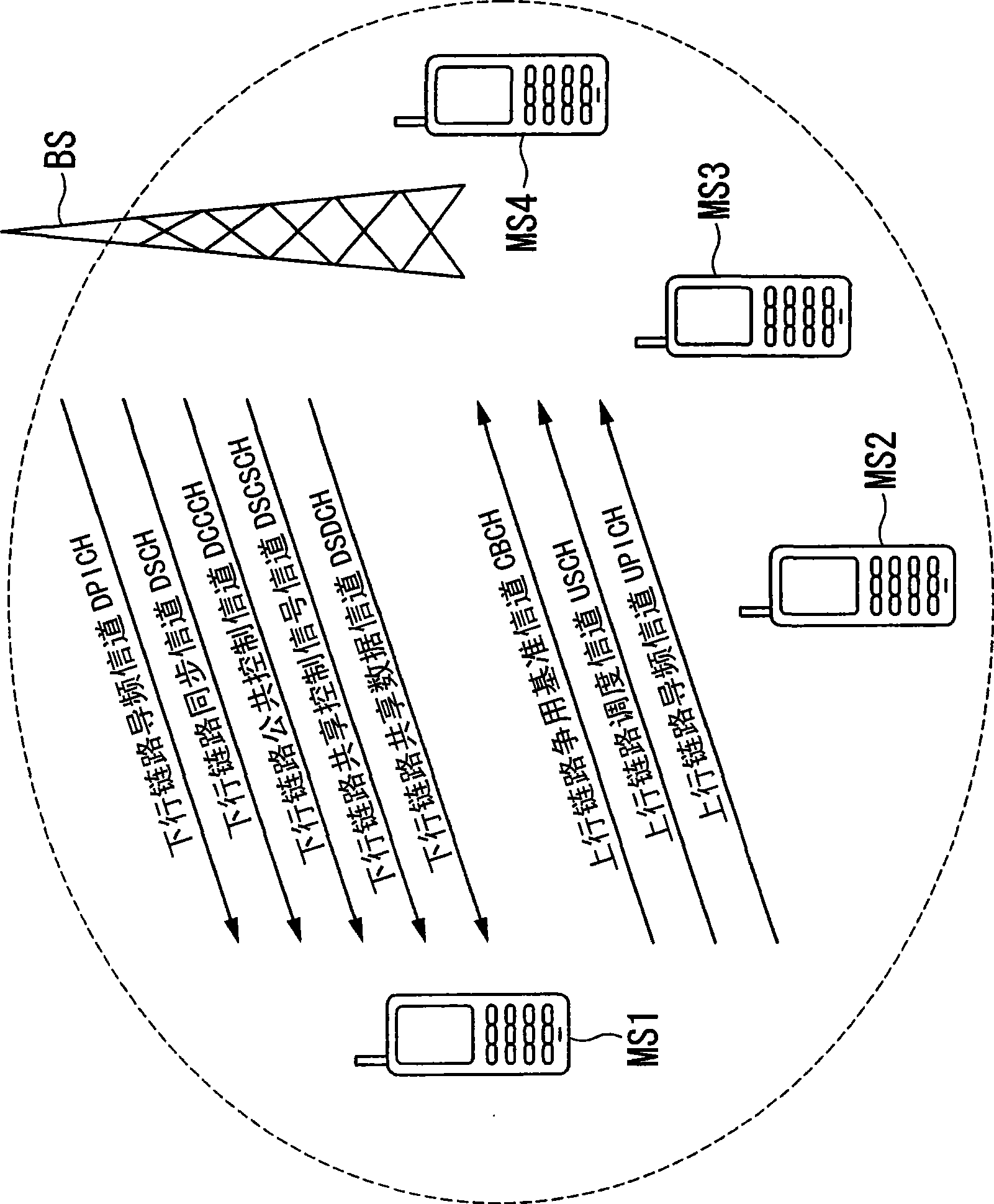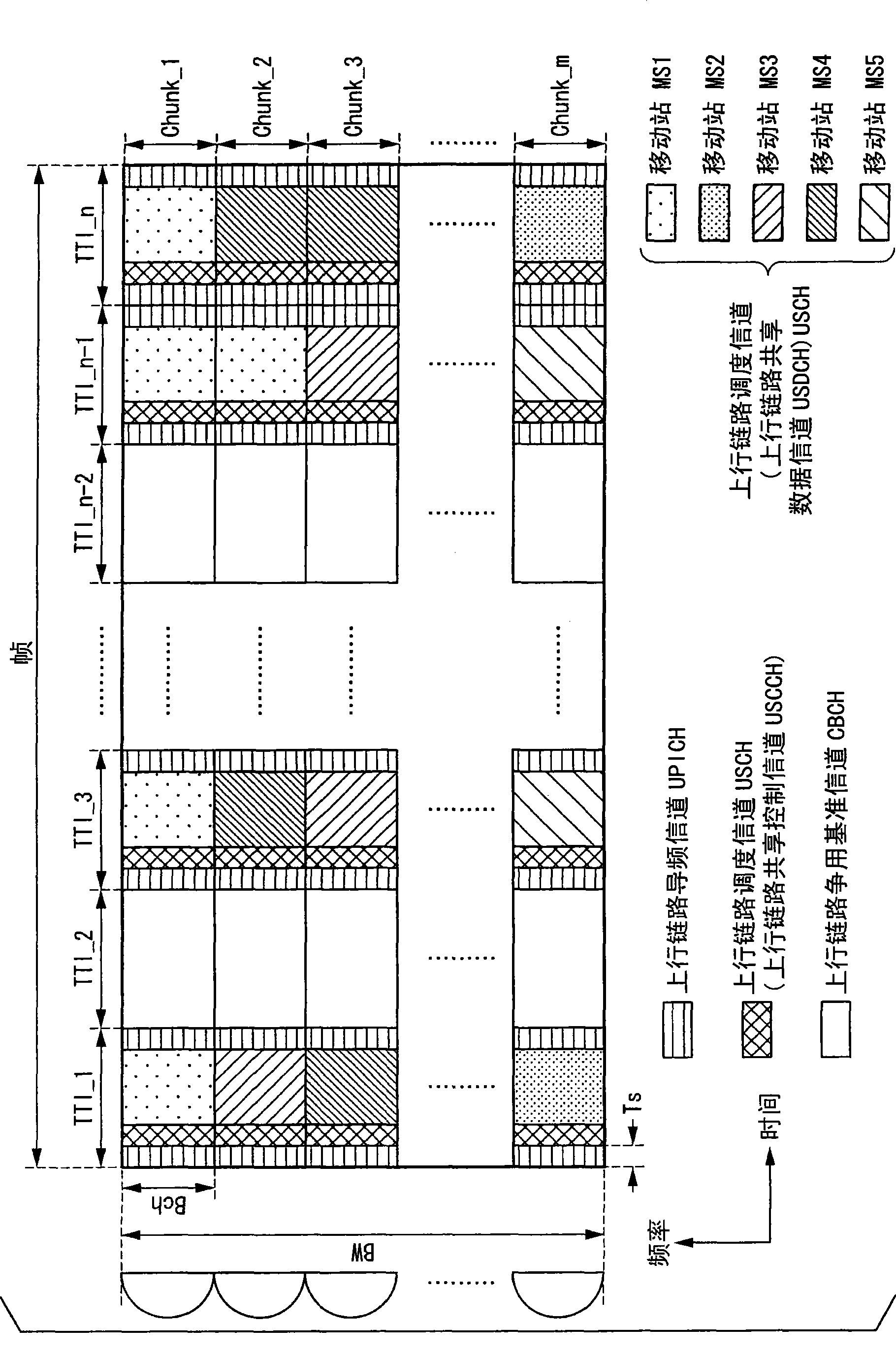Wireless communication system, mobile station apparatus and random access method
A wireless communication system and random access technology, applied in wireless communication, transmission system, multi-frequency code system, etc., can solve the problems of deterioration of response time, random access conflict, etc., and achieve the effect of short random compensation time and variable random compensation time
- Summary
- Abstract
- Description
- Claims
- Application Information
AI Technical Summary
Problems solved by technology
Method used
Image
Examples
Embodiment approach 1
[0211] In this embodiment, the mobile station apparatuses MS1 to MS4 in the Dormant mode set the upper limit of the random compensation to a value shorter than the set value in the Idle mode, and set the random compensation time within the range of the time interval. In this way, the mobile station devices MS1-MS4 in the Dormant mode can shorten the time for retransmission, that is, the time required to establish a wireless connection can be shortened compared with the mobile station device in the Idle mode, and the effect of the original Dormant mode can be improved, and it is possible to provide Best service ever.
[0212] A retransmission method of the random access channel RACH of the mobile station devices MS1 to MS4 in the Dormant mode and the mobile station devices MS1 to MS4 in the idle mode will be described with reference to the drawings.
[0213] Figure 11 shows the maximum random backoff time for retransmission of the random access channel RACH in idle mode and d...
Embodiment approach 2
[0224] In Embodiment 2, the mobile station apparatuses MS2 to MS4 in the Dormant mode have an average random backoff time shorter than that of the mobile station apparatuses MS2 to MS4 in the Idle mode, and the mobile station apparatuses MS2 to MS4 in the Dormant mode use the retransmission random access channel RACH The selection branches of the chunks are dispersed and wider than those of the mobile station apparatuses MS2 to MS4 in the idle mode. In this way, the collision probability of random access among the mobile station devices MS2 to MS4 in the Dormant mode can be reduced, and the retransmission time for the mobile station devices MS2 to MS4 in the Dormant mode can be shortened. That is, the mobile station devices MS2 to MS4 in the Dormant mode can shorten the time required to establish a wireless connection, improve the effect of the original Dormsnta mode, and provide optimal services.
[0225] A retransmission method of the random access channel RACH of the mobile...
Embodiment approach 3
[0237] In Embodiment 3, the mobile station apparatuses MS1 to MS4 control the maximum random backoff time TDmax in the Dormant mode in accordance with the number of chunks selectable at the time of retransmission of the random access channel RACH.
[0238] The number of chunks and the frequency range that can be selected at the time of retransmission of the random access channel RACH differ depending on the mobile station class or operation mode of the mobile station devices MS1 to MS4.
[0239] The mobile station class indicates the frequency bandwidth that can be transmitted and received at one time in the wireless unit 130 of the mobile station apparatuses MS1 to MS4. Mobile station apparatuses MS1 to MS4 can select chunks through baseband processing of modulation unit 103 or OFDM decoding unit 111 if they are within their frequency bands. the oscillation frequency. This change causes a control delay for changing the setting from the digital part to the analog part, and a ...
PUM
 Login to View More
Login to View More Abstract
Description
Claims
Application Information
 Login to View More
Login to View More - R&D
- Intellectual Property
- Life Sciences
- Materials
- Tech Scout
- Unparalleled Data Quality
- Higher Quality Content
- 60% Fewer Hallucinations
Browse by: Latest US Patents, China's latest patents, Technical Efficacy Thesaurus, Application Domain, Technology Topic, Popular Technical Reports.
© 2025 PatSnap. All rights reserved.Legal|Privacy policy|Modern Slavery Act Transparency Statement|Sitemap|About US| Contact US: help@patsnap.com



